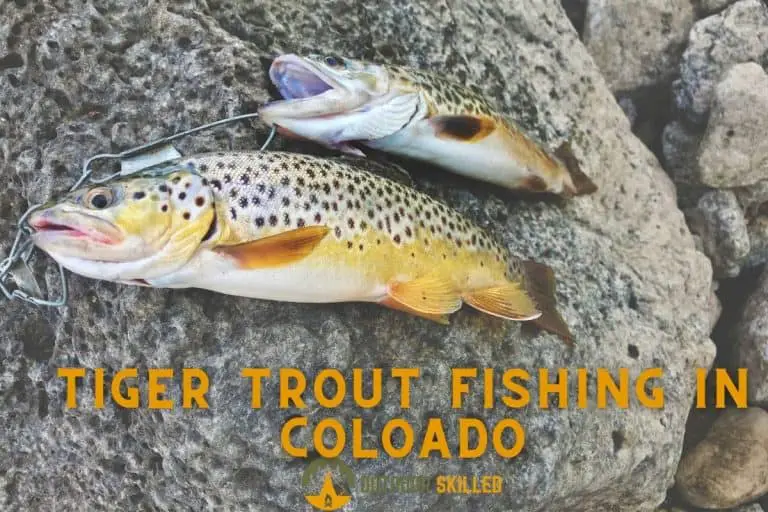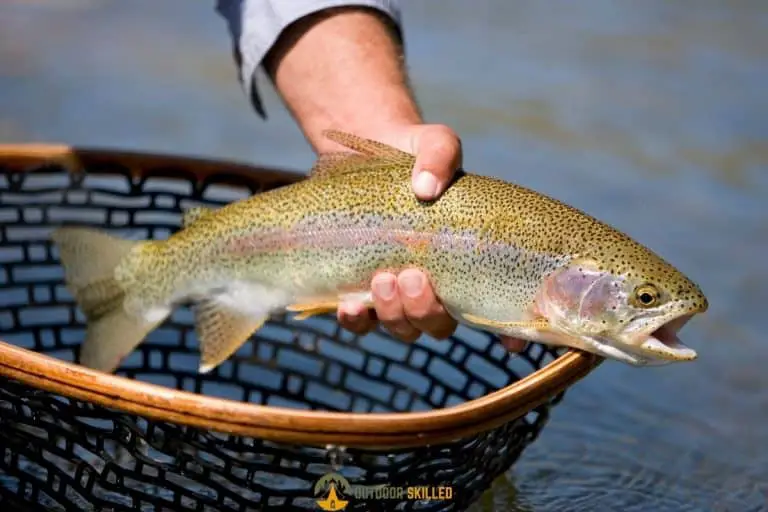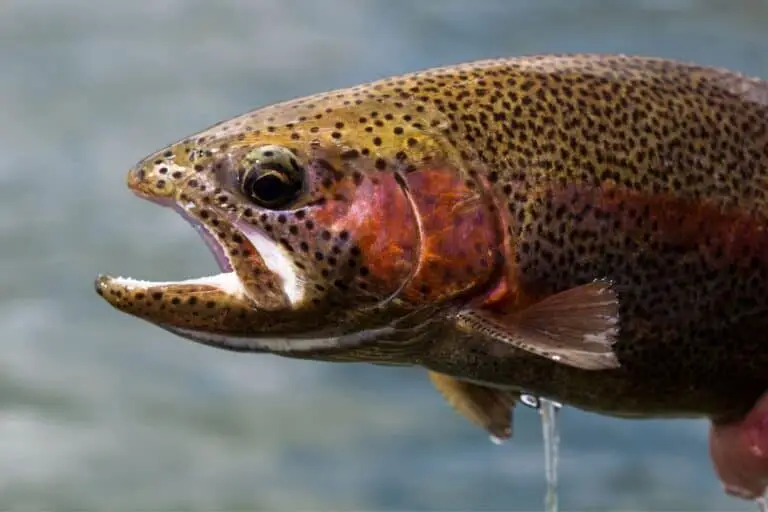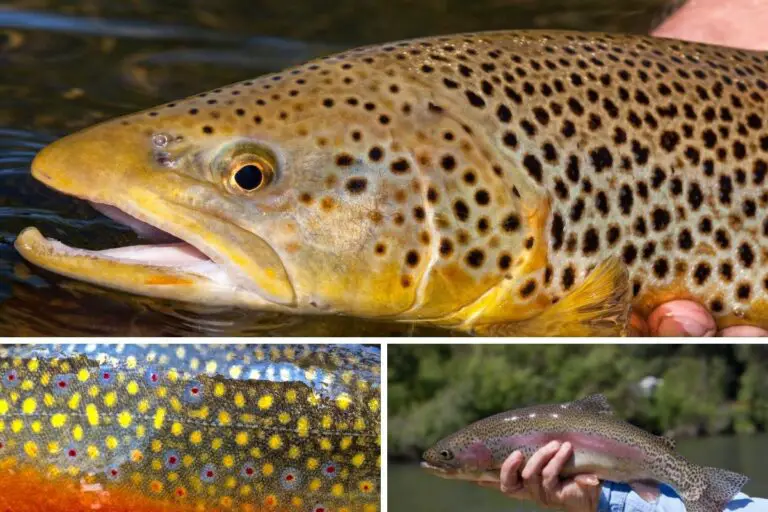How to Catch Tiger Trout from Shore? Spots, Times, and 7 Pro Tips
Tiger trout is a special catch for many anglers who are fond of game fish. It’s quick and fierce in a way that makes your fight with it an unforgettable one. However, due to how relatively rare it is, it might be a little tricky to find and catch especially from shore where there’s a lot to cover. That’s exactly why you need this guide.
So, how to catch Tiger Trout from shore? To catch tiger trout from shore you need to target cold waters whether it’s deep or shallow. Ultra-light rods will give you more sensitivity with light-to-medium spinners to match. A 4-to-6 pound test monofilament line, a 6 or 8 bait hook, and one or two split shots with a flashing spinner as lures
Of course that’s not all of it. To actually see success, there is quite a bit more to learn, so keep reading for the best places, spots, times, and pro tips that can really help you on your next fishing trip.
Table of Contents
What Is A Tiger Trout?

So, what is a tiger trout? Tiger Trout is a genetic cross between a female brown trout scientifically known as Salmo trutta and a male brook trout scientifically known as Salvelinus fontinalis. It’s considered a wild rarity since it is a hybrid between two different species of trout.
They are readily identified by their grayish-brown color and a labyrinth-like pattern on their bodies. They have a brightly colored belly, which is usually a yellow and orange combination. Their tail fin is circular, and their pectoral and pelvic fins are usually the same color as their belly. Mature males have more vivid colors than females and sometimes grow a noticeable kype on their lower jaw.
They are bred and raised on fish farms then some states stock them in lakes to control invasive fish species. Since their primary diet is other fish, tiger trout works extremely well in management purposes without harming the native fish populations.
They grow faster than native fish and reach sizes of 18-20 inches (about 30-46 cm) in just a few years. However, they are still easy to manage. This is because they’re sterile and safe to catch and keep. These are the two reasons why tiger trout populations remain stable everywhere they are.
Where To Find Tiger Trout?
Coldwater conditions are ideal for tiger trout. Tiger trout can also be found in moving water. They can swim really quickly which enables them to swim against the current while remaining in oxygen-rich water. Another prime location for tiger trout is small fish concentrations, if you’re able to locate them you’re half done.
That’s why Canada and the North America states are more likely to stock them in water bodies while fewer southern states can have suitable conditions for them. Here’s a list of states that are famous for their tiger trout stockings:
- Utah
- Colorado
- Arizona
- Wyoming
- Pennsylvania
- South Dakota
- Tennessee
- Delaware
- California
- Illinois
- Montana
- West Virginia
- Idaho
- Nevada
- Oregon
- Washington
- Michigan
- Wisconsin
Because of the cold weather, some Canadian provinces will stock tiger trout. Manitoba, Alberta, Ontario, and Saskatchewan are among these provinces.
It’s quite safe to say that you may find tiger trout in other cold places not mentioned in the previous list, but it’s going to be a little harder since their natural occurrence in the wild is rare. You have to make sure that the state you’re fishing in has a tiger trout stocking program first.
How To Catch Tiger Trout?
You can catch tiger trout with either bait fishing or fly fishing. Even though catching trout is limited to specific lakes and rivers which can make it relatively hard, the tiger trout nature of heavy feeding makes it easier. Since they’re sterile, they dedicate all their effort to feeding and they can bite on lots of different lures.
Early morning and late evening are your best options, any other time will probably be too hot for them not to hide deeper in the water where you can’t catch them.
When bait fishing, concentrate on near drop-offs adjacent to tiger trout hunting grounds in 15 to 20 feet (4.5-to-6 meters) of water. If you’re fishing in a stream, you can find them seeking shelter in deep pools and water pockets near under-cut banks or under overhanging trees. You can use small lures into deep water like spinners, jigs, and crankbaits to imitate small fish that trout go after.
If you’re going for fly fishing, make sure to match the hatch of the water body you’re fishing in. using Zonker Minnow, Sparkle Dun, or Midge Patterns can pay off in most tiger trout habitats.
Midges are present in most water bodies all year and are a good place to start. When fished on intermediate or falling lines, a Zonker Minnow in a white pattern is ideal in attracting tiger trout as it resembles baitfish. During mayfly hatches, a Sparkle Dun is your go-to.
Leech, Wooly bugger, Muddler minnow, Freshwater Clouser, and Schultzy’s Sculpin are all excellent options when fly fishing for tiger trout at any time of year. You can check out my complete guide on fishing with wooly bugger here.
Can you catch tiger trout from the shore?
So, can you catch tiger trout from the shore? Yes, you can catch tiger trout from the shore on colder days when they’re roaming the shallow. On hot days they stay in deeper water seeking shade and shelter, but you can easily catch them during cold days in the shallow with different baits or flies.
How To Catch Tiger Trout From Shore?
To catch Tiger Trout from shore you need to suspend bait under a bobber to a likely spot and wait for the bobber to wiggle, dive, or jerk. Sometimes trout are in deeper water and the bait needs to be down deep where the fish are. In this case, the lead weight is attached about 1 ½ foot above the baited hook and cast out.
The Best Time To Catch Tiger Trout From Shore
To begin, choose a season when the water temperature is cool enough for tiger trout to remain in the shallows and be easily accessible from shore. This applies in the spring and fall. When the water temperature reaches 45°F (7.2°C), feeding activity takes place in the shallows.
To successfully catch tiger trout it’s best to target late in the evening. Fishing from shore typically concentrates on shallower water which gets colder late in the evening and allows tiger trout to roam freely.
The Best Gear To Use To Catch Trout From Shore
Using light or medium-light spinning rod in the 5ft to 7ft range is suitable for catching tiger trout of any size. Having light tackle will provide you with intensity and enhance the thrill of your fishing experience. Any good quality reel will be fine as long as it matches the rod weight and has a good reel that has a solid drag system.
It’s safe to go with a 6-pound monofilament or fluorocarbon. You can also use something like a 10-pound braid with a 4-to-6 foot (12-to-1.8 meter) fluorocarbon leader. Add a 6 or 8 bait hook and one or two split shots and fasten it 10-to-12 inches (about 25-to-30 cm) above the hook. Adjust the weight by adding or subtracting split shots if required to keep the bait going in the current.
If you’re looking for some excellent tried-and-tested options, I think you will like my recommended Trout fishing lines here. You can also check out my recommended Trout Fishing Rods here. This is the gear I’ve used over the years with great success, and I think any of these choices will be a very valuable addition to your fishing gear.
The Best Bait To Catch Tiger Trout From Shore
Casting any large silver streamers or a lure that imitates a minnow will result in multiple strikes close to the shore. You might use a floating line and move the bait along the surface of the water to imitate an insect.
The insects that tiger trout pursue most are damselflies, midges, mosquitoes, and flying ants so do your best to imitate them. You’ll have more luck if there aren’t a lot of live insects out and about where you’re fishing, or tiger trout may lose interest in your lure.
Salmon eggs also make for an excellent bait for Trout, and I’ve written a separate post on how to fish trout with salmon eggs here, I think you will find it quite helpful.
Best Baits To Catch Tiger Trout
Natural colored baits work well in most conditions, but that doesn’t mean you can’t use unnatural bright colors like pink with an aggressive presentation to entice tiger trout to strike. You can use bait such as spinners, spoons, crankbaits, and jigs.
Silver or gold blades with brown, black, or reddish bodies work wonders for spinners. The same colors in spoons, such as red and gold or silver and blue, produce amazing results. When fishing with crankbaits, try to match the size and color of the baitfish in the area where you are fishing. Most days, browns, blacks, rainbow trout, and perch colors perform well.
Nightcrawlers and dead minnows work well if you cast them into deep water and slowly retract them. This imitates easy prey that is in distress which arouses trout predator nature and encourages them to strike.
Size your lure appropriately to the size of fish present in the water body. ⅛ to ⅜ ounce sizes are a good choice. It’ll take some time with trial and error to know what best fits the tiger trout where you fish. So don’t stop trying.
No matter what bait you use, rest assured that tiger trout sees it. So if it’s reluctant to attack the bait, work it more aggressively till you succeed in enticing their aggressive nature rather than their feeding one.
7 Pro tips for catching tiger trout from shore
- Grab a depth map. This will help you spot the closest part of the shore to the deeper spots of the water body. That’s often the best place to cast from because you get to target them in the shallows but can work your way deeper if needed.
- Locate natural ambush points. An ambush point is something on the lake like a large rock pile, a tree, a point, finger, island, cliff, submerged bridge, or a sunken boat. They will use these locations to ambush unsuspecting fry.
- Use sonar devices. Many people ignore this tip even though it can make their fishing for trout 10 times easier. By locating small fish markings you can locate tiger trout almost immediately as they often stay there to feed.
- Target them right after stocking. After tiger trout are stocked, they take time to adjust to the environment by sticking around the point where they dumped in for a few days. This also means that asking people about where exactly the stocking truck dumped them is a great help.
- Avoid heavy-pressure areas. If you’re heading somewhere and you found other anglers on the shore aiming at tiger trout as well, don’t even bother unpacking. Heavy pressure draws tiger trout away and you won’t have much luck there.
- Don’t miss rainy days. Rainy days provide excellent opportunities to enhance your tiger trout fishing. Rain increases the oxygen in the water which powers up trout to go out there and feed more heavily.
- Go for cloudy days. Tiger trout hate sunlight and heat. Cloudy days provide good shade for them to roam free in the water instead of hiding in a specific place.
Related Questions
What Is The Best Time To Fish For Trout In A Lake?
The best time to fish for trout in a lake is when mosquitoes and bugs are most active, so the best fishing times are in the warmer seasons. Early morning and late evening are the perfect times of day to fish in the summer. It’s safest to head out at sunset in the spring and fall.
Do Trout Bite On Cloudy Days?
Yes, trout bite on cloudy days. On cloudy days, trout will be able to roam in all three layers of the water column, including the surface. While on sunny days, they will have difficulty looking up at the sky to locate prey.
Helpful Resources
If you like this article, please share it or pin it, you can find the share buttons below. We will really appreciate it ❤️

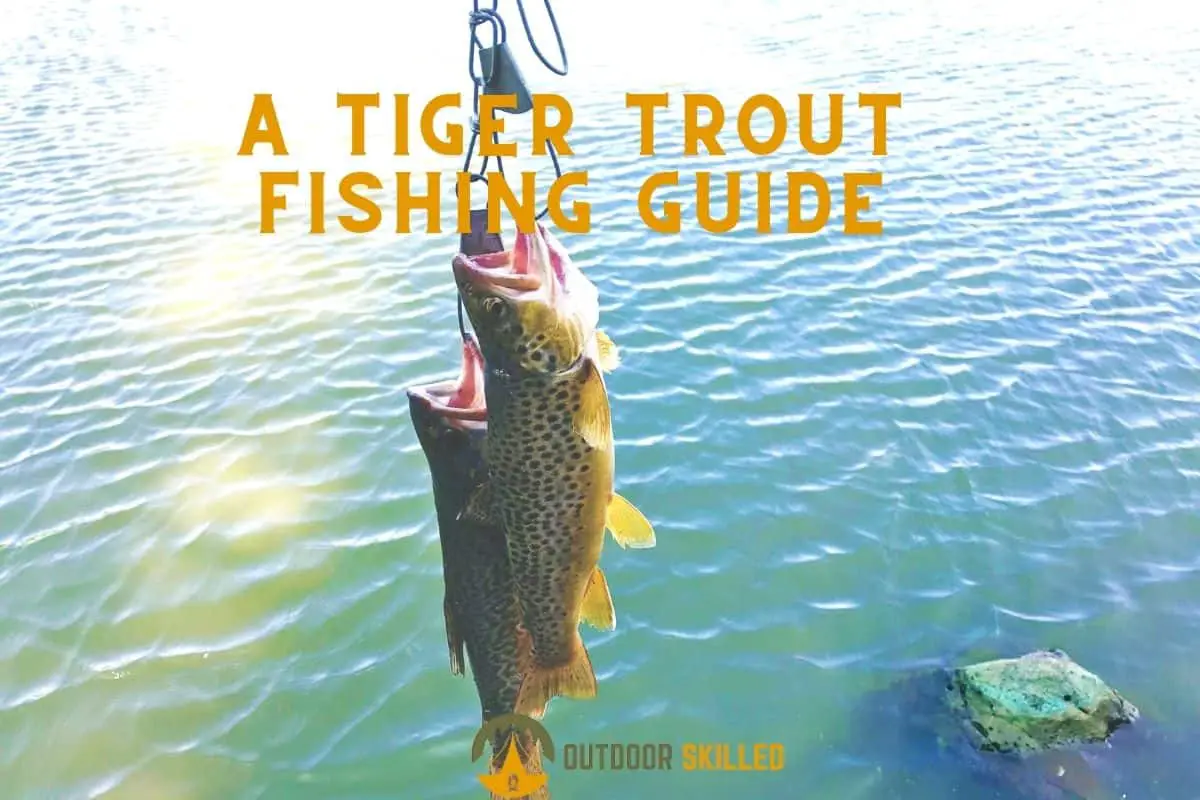
![How to Keep Trout Fresh After Catching [For As Long As Possible]](https://outdoorskilled.com/wp-content/uploads/2021/11/fresh-trout-768x512.jpeg)
